Permits to Study and/or Publish Objects
Published: 2021-01-13
Swedish scholars interested in studying archaeological material in Greek museums and storerooms should read the information available below:
Attached files:
Swedish scholars interested in studying archaeological material in Greek museums and storerooms should read the information available below:
Attached files:
The Swedish Institute at Athens can host six active field projects at a time: three collaborations with the Greek archaeological ephorates and three independent projects. Permission to conduct field research is granted by the Greek Ministry of Culture and Sports.
Swedish scholars interested in conducting field research in Greece should contact the SIA Director and read the following available information.
Attached files:
Att ansöka om tillstånd för arkeologiskt fältarbete i Grekland.
Policydokument angående hantering av overhead vid Svenska institutet i Athen.
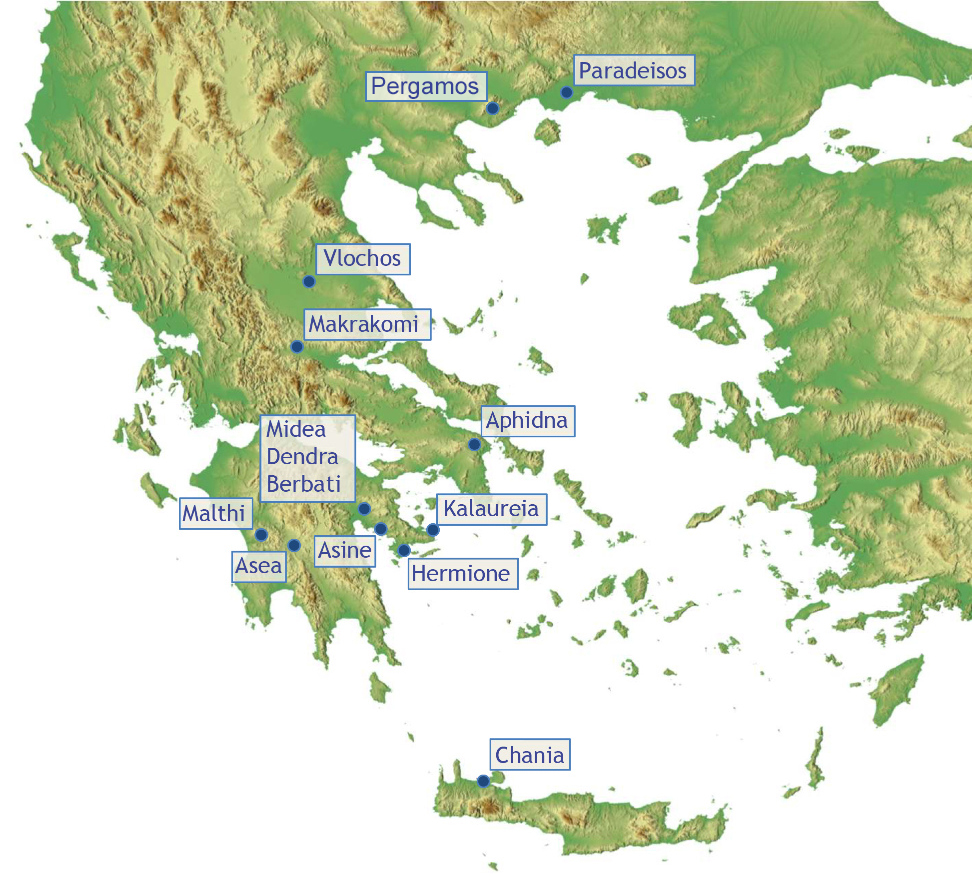
Map showing the location of fieldwork conducted by the Swedish Institute at Athens
The first Swedish archaeological campaign in Greece took place in 1894 when Sam Wide and Lennart Kjellberg undertook excavations at the Sanctuary of Poseidon at Kalaureia (today the island of Poros). Since then a total of 13 sites have been explored by Swedish archaeologists. Most of them are located in the Peloponnese, but fieldwork has also been conducted on Crete, in Central Greece and Thrace. Today three projects include active ongoing field seasons (at Kalaureia, Vlochos and Hermione) while studies of previously excavated material from several other sites are undertaken continuously.
Ongoing archaeological projects
Under Publication
Previous
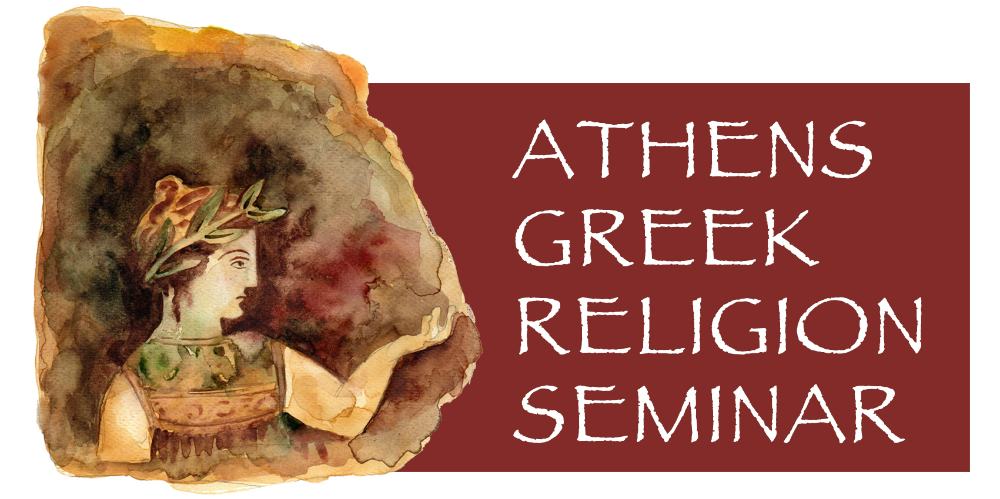
Organizers The Swedish Institute and Jenny Wallensten welcome scholars with an interest in ancient Greek religion to participate in the discussions of the Athens Greek Religion Seminar.
The AGRS is a running seminar treating all aspects and angles of ancient Greek religion. The Seminar provides a platform for presentations of work in progress as well as a forum for discussions of current research trends and new literature.
Martin Persson Nilsson (1874–1967) was a Swedish philologist, and a scholar of the Greek and Roman religious systems. In his prolific studies, he combined the literary evidence with the archaeological evidence, linking historic and prehistoric evidence for the evolution of the Greek mythological cycles. In 1909 he was appointed the first Professor of Ancient Greek, Classical Archaeology and Ancient History at Lund University.
Nilsson is perhaps the most influential Swedish classicist of all times. His best-known work in German is Geschichte der griechischen Religion in the Handbuch der Altertumswissenschaft. He had previously published it under the title Den grekiska religionens historia (1922). His best-known work in English is Minoan-Mycenaean religion, and its survival in Greek religion.
Lectures in ancient Greek religion in memory of Martin P. Nilsson are organized biannually at the Swedish Institute.
2023 Renaud Gagné, ‘How to write a festival? The ritual archive of ancient Greek religion’
2021 Nicole Belayche, ‘“On the giant’s shoulders”: The Eleusinian Mysteries in the Roman period. Between historiography, literary traditions and epigraphy’
2018 Angelos Chaniotis, ‘The sound of ancient religion’
2017 A celebration of the work of Martin P. Nilsson. A one-day international symposium: Jon Mikalson, ‘Martin P. Nilsson and the Geschichte, vol. 1’; Eftychia Stavrianopoulou, ‘Hellenistic religion(s): Revisiting Martin P. Nilsson’s Geschichte der griechischen Religion II: Die hellenistische und römische Zeit’; Vinciane Pirenne-Delforge, ‘To be ‘popular’ or not to be ... Nilsson’s Greek folk religion and afterwards’; Matthew Haysom, ‘Nilsson in the Bronze Age: The place of prehistory in the history of Greek religion’
2014 Vinciane Pirenne-Delforge, ‘Searching for “popular religion” 70 years after Martin P. Nilsson’
2012 Henk S. Versnel, ‘Implications and complications of polytheism: Three Greek test cases’
2010 Jan N. Bremmer, ‘The agency of statues: From Homer to Late Antiquity’
2008 Stella Georgoudi, ‘Blood, dirt and purity. Sacrifice and purification in the Greek world’
2006 Gunnel Ekroth, ‘The wild, the innocent and the domesticated. They all died in a Greek sanctuary’
2003 Petros Themelis, ‘The cults on Mount Ithome at ancient Messene’
2001 Robert Parker, ‘The problem of the Greek cult epiteth’
1999 François de Polignac, ‘Ritual contexts and the definitions of “public space” in early Greece’
1997 Christiane Sourvinou-Inwood, ‘Hylas, the Nymphs and others. Myth, ritual and ethnicity’
1994 François Lissarrague, ‘Images and rituals: Religious aspects in Attic vase-painting’
1993 Fritz Graf, ‘Signs for the gods. Ritual and communication in ancient Greece’
1992 Walter Burkert, ‘Ikonographie und Ritual im dionysischen Bereich’
1991 Michael H. Jameson, ‘Greek religion: The public record’
1990 Kevin Clinton, ‘Myth and cult: The iconography of the Eleusinian Mysteries’
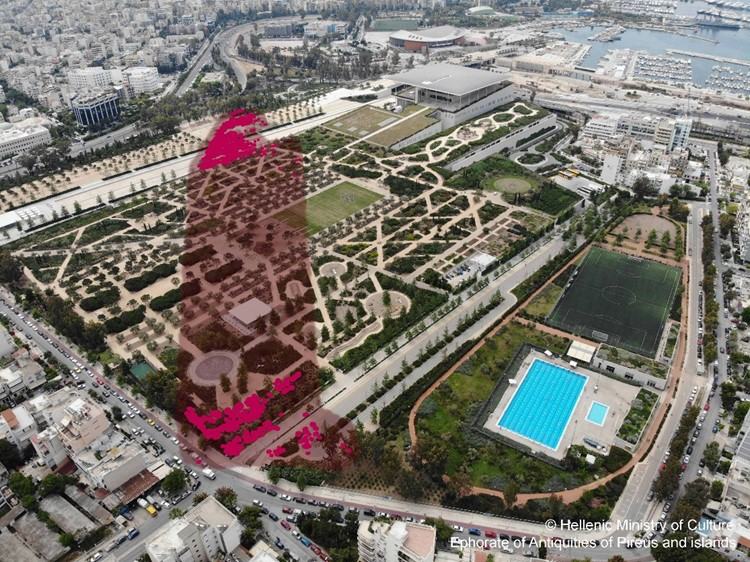
Fig.1: The location of the cemetery, the probable total area, as seen in the actual Phaleron Bay from NW. ©Hellenic Ministry of Culture and Sports. Ephorate of Antiquities of Pireus and Islands.
The Phaleron Delta cemetery is spatially delimited by the sandy deposits of Phaleron Bay, most of which are not visible today due to the continuous earthworks that were initated at the beginning of the last century and continue uninterruptedly to this day. Excavations at the cemetery began in the late 19th century, continued in the early years of the 20th century and are being pursued to this day after a 100-year hiatus. (Fig.1) It is a spatially extended coastal cemetery, outside of the boundaries and the walls of Athens, but very close to its first harbour. Based on the excavation data, the period of its use can be placed from the last decades of the 8th century BC until the 4th century BC.
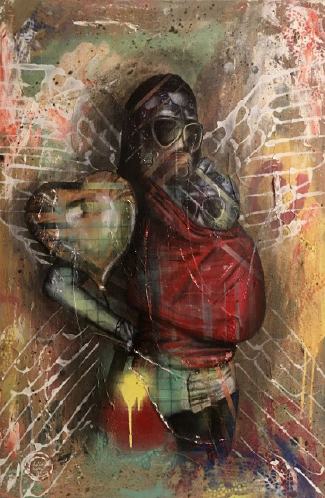
"My guardian" by Jelbert Karami
During my guest researcher stay at the Swedish Institute in Athens, I aim to research the vulnerability and resilience strategies of Assyrian and Yazidi refugees in a transit migration context by making use of an ethnographic research design supported by archival research at several institutions in Greece. So far, no specific studies have been conducted among these groups in Greece. This study will help me to understand how these groups experience vulnerability in a transit migration context and how they build their resilience in different socio-cultural environments.
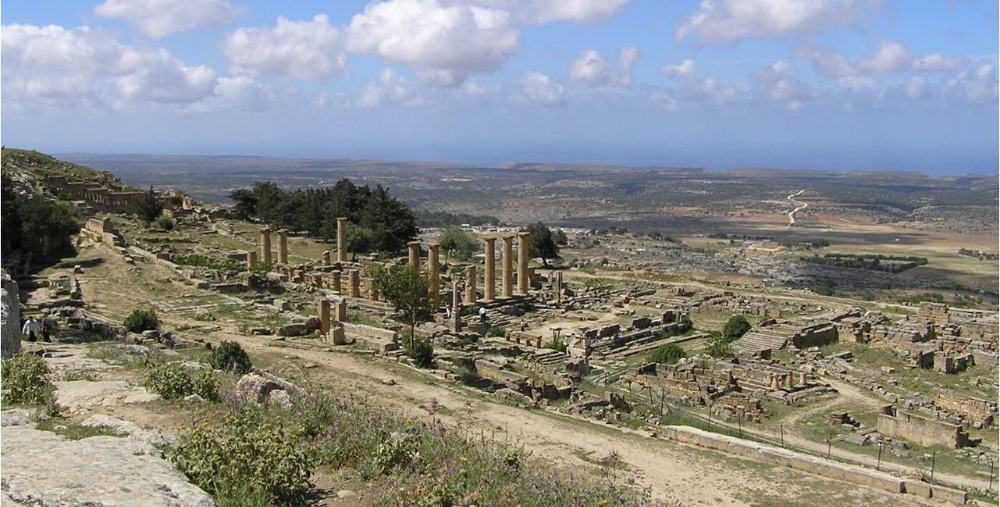
The Sanctuary of Apollo in Cyrene
The project aims at studying a time and a place in the history of the Mediterranean that has not received the attention it deserves. For 600 years a flourishing Greek culture existed in today’s Eastern Libya. The area was dominated by Cyrene, a Greek colony founded in the 7th century BC, which in turn founded several Greek cities in this part of North Africa known as Cyrenaica.
We use cookies to enhance your online experience.
By browsing our site, you agree to our use of cookies.
